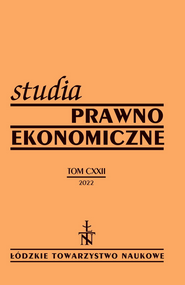VAT GAP DETERMINANTS IN THE EUROPEAN UNION
VAT GAP DETERMINANTS IN THE EUROPEAN UNION
Author(s): Radosław Pastusiak, Monika Bolek, Anna Maria PluskotaSubject(s): Economic policy, Government/Political systems, Economic development, EU-Accession / EU-DEvelopment, Fiscal Politics / Budgeting
Published by: Łódzkie Towarzystwo Naukowe
Keywords: VAT gap; determinants of the VAT gap; GMM;
Summary/Abstract: Background: The VAT gap is a key topic in the context of state budget revenues. The European Union introduced measures to support the member states in reducing the VAT gap. However, if such support is to be effective, it must be applied in the areas that are directly related to the VAT gap. Research purpose: The study aims to identify significant determinants of the VAT gap in EU countries. The present study identifies factors that the EU as a whole can deal with to support member states in reducing the VAT gap. Methods: The study concerns the analysis of descriptive statistics of selected variables and the econometric model with the GMM system, based on which it was possible to identify significant determinants of the VAT gap in the group of EU countries. Conclusions: The key determinants of the VAT gap in the group of EU countries are economic growth and efficiency of governance. As a consequence, the EU policy aimed at reducing the VAT gap should focus mainly on those aspects that have a significant impact on the states’ revenue and are under the jurisdiction of the EU. The most important aspects that the EU as a whole should focus on are the economic growth and the efficiency of the administration’s activities. Indicating the directions of EU action fills the current research gap in this area.
Journal: Studia Prawno-Ekonomiczne
- Issue Year: 2022
- Issue No: 123
- Page Range: 119-132
- Page Count: 14
- Language: English

